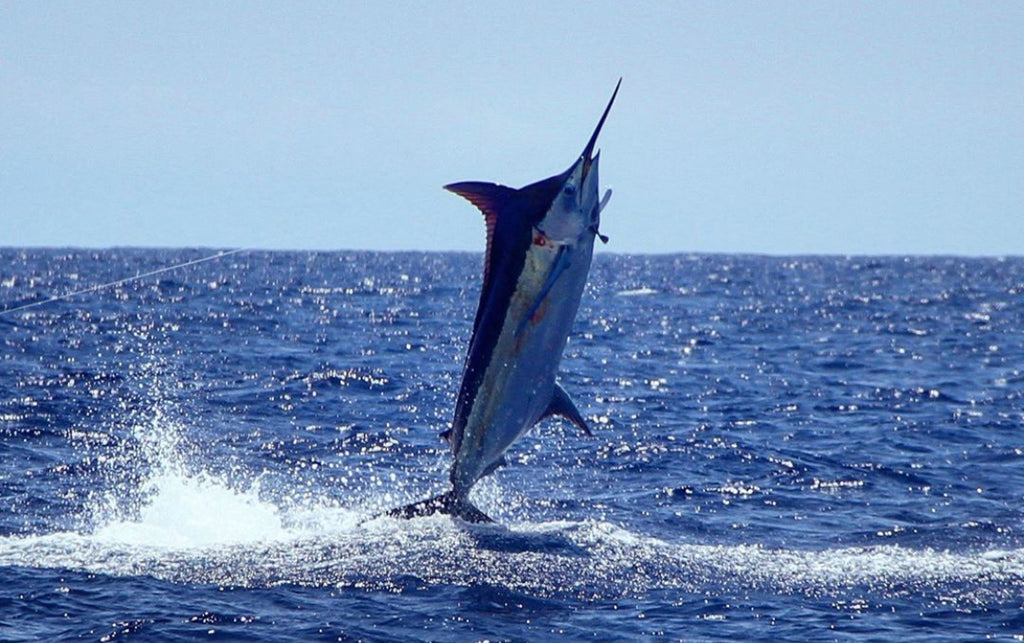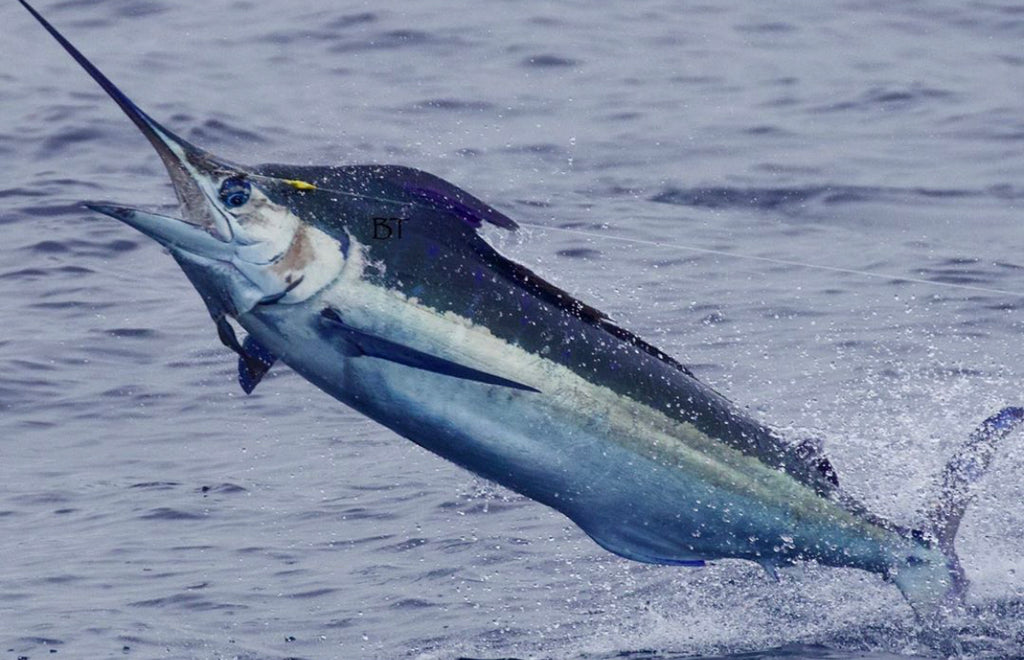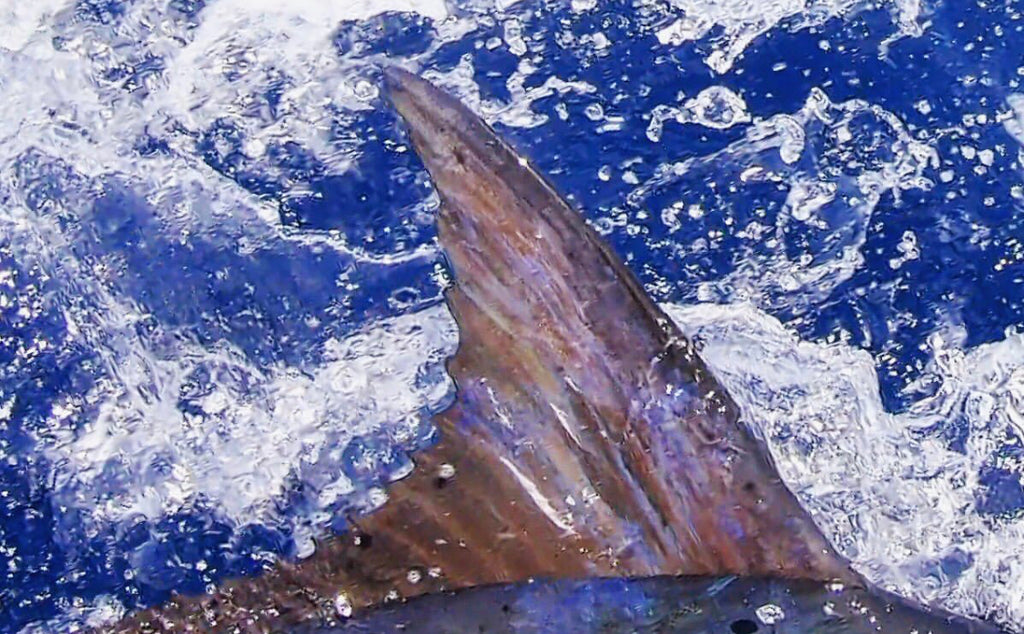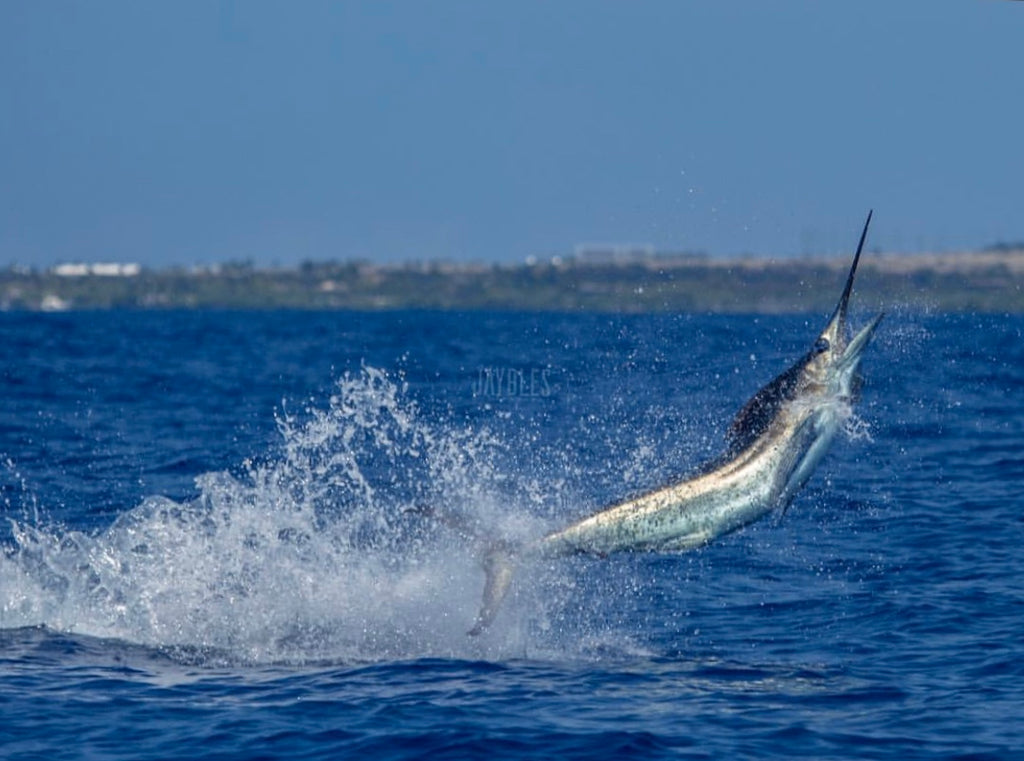Here at Sun Dot, we have been wanting to provide interesting and fun blog posts to educate our friends and Ohana. We have decided to focus on one fish each month, and give our readers a basic background and some fun facts. Each month we will choose a fish based off one of our fish flags to highlight. These blogs are going to come from the eyes and mind of a teenager, so don't expect them to be super scientific or high-tech. We wanted to present something simple and easy to understand for all ages.

Blue Marlin are amazing animals, photo: Carol Lynne, @fishergal808
Maya Maki has been an all-star student since I first met her in the 6th grade at Kohala Middle School (I was a substitute teacher there for many years). She does not hesitate to work hard to achieve her goals, one of which is to attend college in San Diego to become a dermatologist. Although writing blogs about fish may not seem like it has much to do with skin care, I think that research and writing are very important skills to have and will without a doubt help Maya succeed in the future.
This month we are kicking it off with the Blue Marlin, by far our most popular Fish Flag and a prize fish to catch here in the Hawaiian Islands.

Blue Marlin, photo: Bryan Toney, @kona_grander
We hope you enjoy our new monthly blog posts on some of the main pelagic fish found in Hawaii and around the world. Please let us know what you think!
Blue Marlins otherwise known as Makaira Nigricans are the largest of the Atlantic Marlin, and one of the biggest fish in the world. Marlins are huge fish. They can grow up to 14 feet long and weigh up to 1,985 pounds. Their size can compare to a 6 foot man! Female Marlins can get as old as 27 years and males can live up to 18 years!
Due to the dark blue top and silvery white bottom and the dorsal fin and spear-shaped upper jaw they are one of the most recognizable fish in tropical waters. You can find Marlins in the Atlantic, Pacific, and Indian Oceans. Marlins migrate to follow warm ocean currents. These carnivores eat Mackerel and Tuna but also dive down to spear squid. As one of the fastest fish in the sea, it's easy for these fish to swim up and spear a school of fish.

Blue Marlin dorsal fin, photo: Chris Donato, @grandermarlin
For fishermen, Marlins are a great achievement. When reeling one in, they are known for fighting for their life. Once a fisherman reels one in, this monster fish is a great reward! Considered a delicacy in Japan these fish make great sashimi!
What started out as a mini research project for Maya (since she was out of school due to Covid 19 restrictions) we hope will lead to a knowledge base on all types of marine animals. Not just for Maya but for all of our customers and social media followers.

Blue Marlins put up a good fight, photo: Joe Byrum, @Jayblesphoto
Please let us know if you have a particular fish you are interested in learning more about, or if you would like to write a feature story for us, or submit any of your photos or images to be used. We would love to have you involved, and there will definitely be some type of reward (Sun Dot hat, flag or t-shirt) for you or your child's hard work.
Mahalo for taking the time to read Maya's first blog post, we appreciate you!
#SUNDOTOHANA


3 comments
very good information!
I wanna be there so bad #biologist HAHAHAHA
Love this. I have been involved with a very cool satellite tagging expedition fir sword fish with the univ of Washington. I would be happy to share the information for your blog. I know your Aunt Vivian. She stayed at my house one time when she was at the Miami boat show.